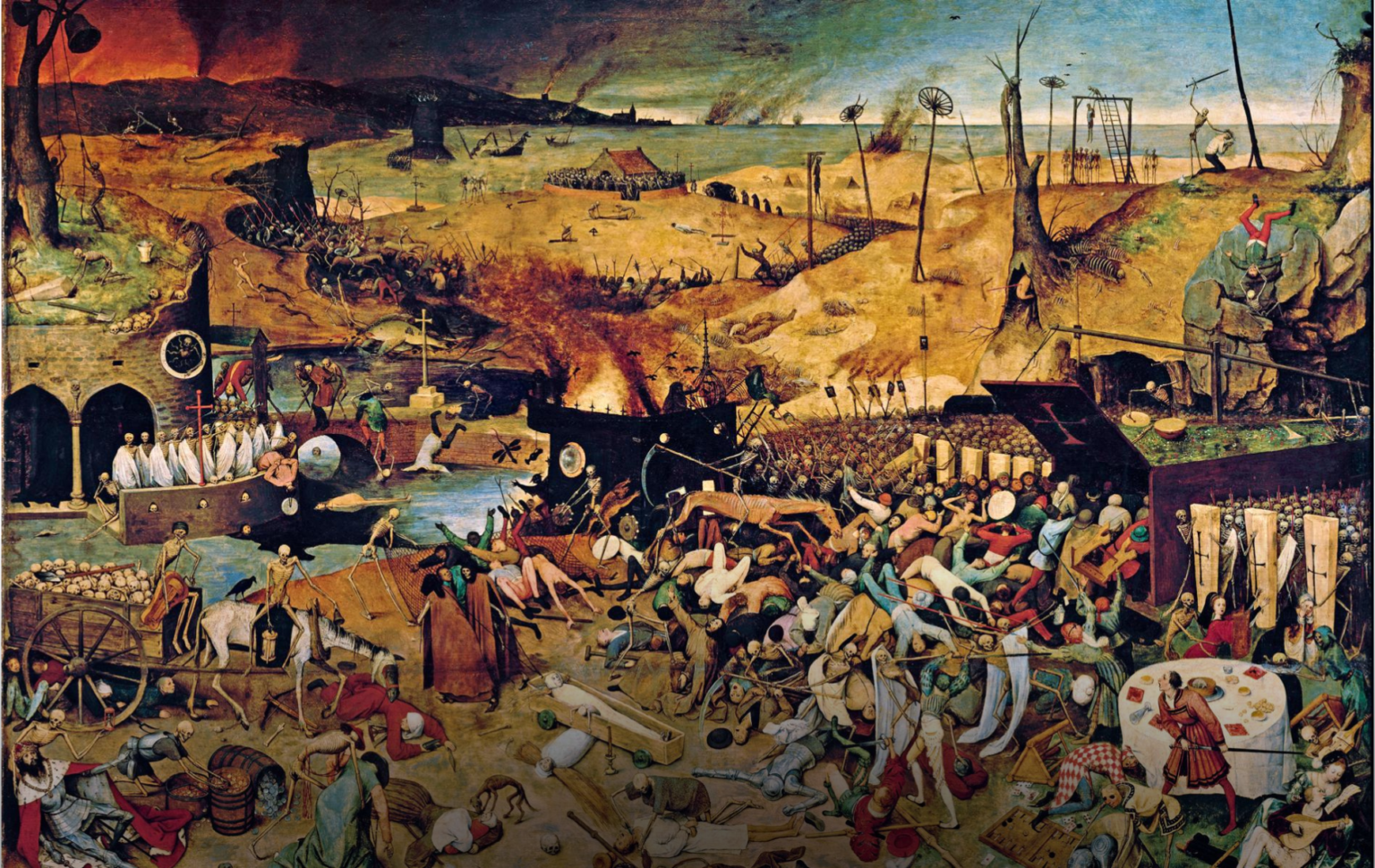This article is the written script of an episode from our podcast series: Kandelaa – Conversations.
( Bu yazı, podcast serimiz Kandelaa – Conversations’tan alınan bir bölümün yazılı metnidir. )
THE BLACK DEATH
The Black Death, or the Dark Plague, was one of the most lethal catastrophes in the world that carried millions away. It was a wicked malady that humankind couldn’t halt. Nothing but time cured the disease; it cleared up after a while, but still is alive, waiting to sicken a host it can find.
Why is not the Black Death as powerful as before, and what led it to spread tremendously to different geographies? This episode is to find more about it, keep listening.
The Black Death is thought to originate in Central Asia. The Tatar / Mongol conquests of Crimea in the 14th century compelled a part of Italians to flee from the region, but an extremely fatal agent was traveling with the galleon that carried them to Italy. 12 Genoese galleons arrived in Sicily with the plague astutely pervading their bodies. Thought to be carried by the rats in the vessel, black death, or bubonic plague, entered Europe from Italy – Genova, and then rapidly transmitted across the continent. The disease quickly became a global pandemic and led to millions of people’s death.
The hygienic conditions were not recognized in Europe in the Middle Ages. Particularly streets were only too stained with filth – and even human waste- that it prompted people to name some of the streets hereupon the situation. In France, it was possible to see streets carrying the word “merde”, which means “excreta” in French, in their name: such as rue Merdeux and rue Merdiere.
Also, rats were soon seen as a severe transmitter of the bacteria. But, according to some sources, recent studies suggest that it was rather fleas and ticks on human bodies which are to blame instead of rats. One research presented the most accurate model for explaining such a high rate, and it was that of fleas and ticks.
Besides, mosquitos – just another insect – contributed to its spread as well.
No cure could be found for the disease, but staying away from other people was significantly effective. Moreover, quarantines were put into application. Shipping activities were cautiously monitored; crews and passengers stayed on board their vessels or in the port where they had disembarked (History Extra).
The incubation of the bubonic plague takes 2 to 8 days in a human body. Mostly, the bubonic plague is spread by the bite of an infected flea. Aside from fever and headache, exanthemas and spots were the most notable symptoms. Painful buboes used to come out the underarm, the inguinal region, and the neck of a contaminated person with dark spots following them. These spots were the reason why the plague was called the “Black Death”. More than half of the contaminated people used die.
Usually, the symptoms of septicemic plague used to show themselves with a bite of an infected flea or animal as it also does in bubonic plague. Skin and other tissues may turn black and eventually die. Septicemic plague can develop from bubonic type or directly show up as the first symptom of plague in general.
The incubation takes a shorter time for the pneumonic plague, the most dangerous type of the disease. The bacteria settle in the body in 1 to 3 days and are defined as the only kind of the Black Death that can infect person from a person. The pneumonic plague could cause respiratory failure or shock since the bacteria could spread to the lungs of a carrier. If not treated, the septicemic and bubonic plague may develop into this type.
The world population is thought to be reduced by ten million people, which resulted in labor shortage and declination of the workforce. English workers started to demand fivefold their previous wages. In order to stabilize the amount allocated to the workforce, the English parliament under King Edward III enacted The Statue of Laborers. The law concentrated on prohibiting the requests or offers for increasing wages than pre-Plague standards and presenting regulations in the field.
Whatsoever, the regulations had the reactions of laborers, so peasants revolted against the regulation in 1381. Similar events had been seen in some other European countries; French peasants had also risen with the Jacquerie Revolt against the excessive taxation imposed by the government. The event took place in the early summer of 1351, during the Hundred Years War. Being drastically suppressed afterward, Jacquerie rebels destroyed the noble castles and executed many noblemen in their protests.
Jews in Germany were accused of spreading the disease by poisoning the wells. Attacks and persecution followed the assertions; hundreds of Jews were killed during the event.
Clergymen were affected by the plague as the lower classes did. The disease diminished the authorities of the church and nobles, providing a basis for the Renaissance and Reform movements to succeed to a great extent.
Although it never completely disappeared, the pandemic was taken under control thanks to medical advancements, quarantine, sanitation, and better hygiene. Still, the population could barely climb up to its previous number in a few centuries. The Black Death, which wreaked havoc on the world in the Middle Ages, was one of the most deadly diseases of history.

